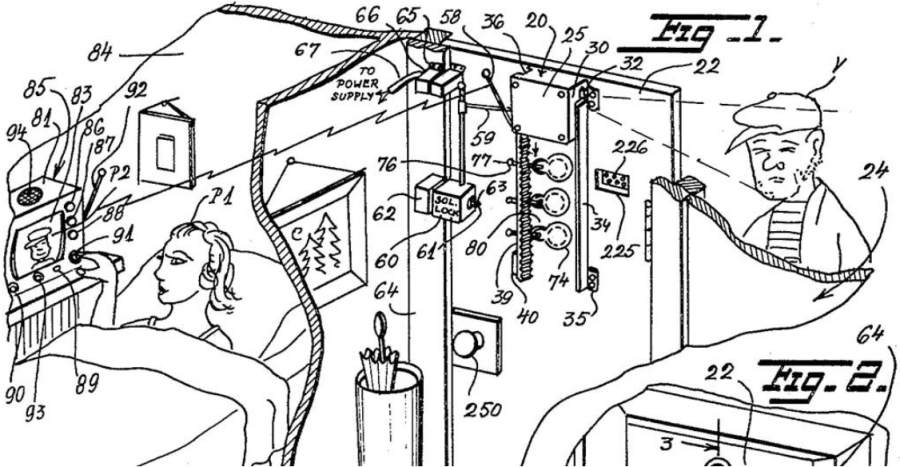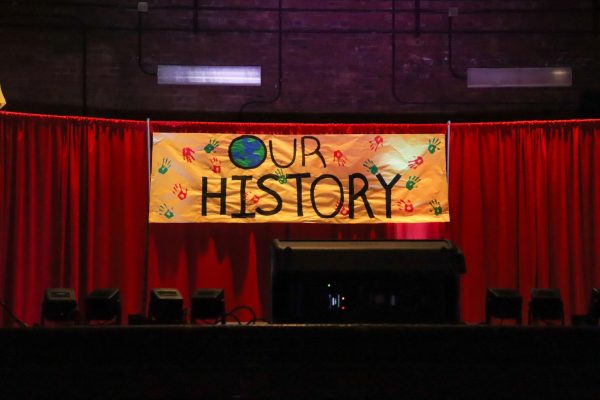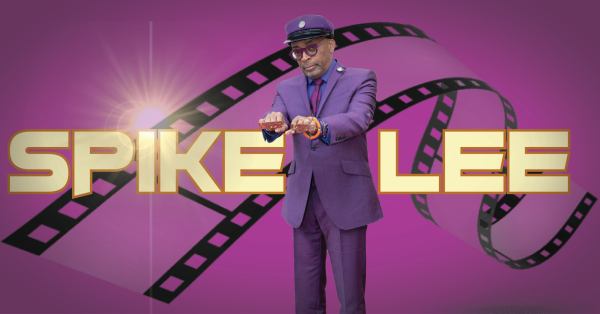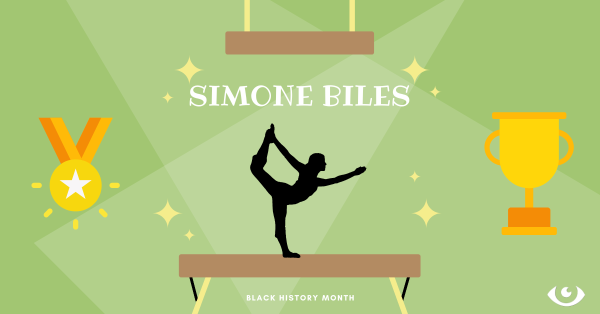BHM: Black inventors’ most impactful creations
February 16, 2023
Think about your heater and how it keeps you warm on cold days. Imagine not having this during the winter season; the result would be the fact that we would be miserable. Though thanks to Alice H. Parker, we aren’t.
The world as we know it would be significantly different without the everyday items we use on a regular basis. From nails to microprocessors, these products, which were invented through pure curiosity and intellect, benefit humans through their everyday use. These inventions were created by people of various races, religions and ethnic backgrounds. In honor of Black History Month, here are some of the most recognized and unrecognized Black inventors and their inventions.
George Crum
Potato chips are a staple American snack- we have George Crum to thank for that. Crum was a famous chef of Native American and Black heritage. Born in Saratoga Lake, New York in 1822, he adopted the nickname “Crum” since it was a name his father used in his own career as a jockey. Though Crum worked as a guide in the Adirondack Mountains of New York, he soon came to realize that he had a special talent for cooking. Though the inventor and the story of the invention behind the potato chips is debated upon, Crum and his story get the most credit. Legend tells it that at a diner in 1853 in Saratoga, New York, a disgruntled customer was unsatisfied with the fried potatoes they’d been served and sent the plate back to the kitchen; they asked for more thinly sliced ones. In response, Crum took umbrage upon the request and cut the potatoes as thinly as possible, then frying them to a crisp. What Crum didn’t expect from the customer was for them to love them, but they did and the potato chip was born. People couldn’t get enough the product was soon packaged and sold all through New England. Crum later founded Saratoga Chips and the company is still in business today.
Alice H. Parker
Though many homes have fireplaces, most, if not all homes, also have a heater. Thanks to Alice H. Parker, people are able to stay comfortable and warm in their homes because of her invention of heaters and the heating system. Not only was Parker’s invention convenient, but it was a revolutionary idea during the 1920s. It meant people would not have to go outside to buy and/or chop wood; the heater also conserved energy and paved the way for centralized heating systems. Invented in 1919, Parker’s design allowed cool air to be drawn into the furnace before being conveyed through a heat exchanger that delivered warm air through ducts to individual rooms of a home. Parker originally got the idea for the heater after realizing her fireplace was not as effective as it should have been during the winter months.
Lonnie Johnson
During the hot days of summer, kids tend to play some type of game associated with water such as having a water balloon fight, racing on slip ‘n slides or playing capture the flag, which often uses water guns like the Super Soaker®. Still a popular toy today, the Super Soaker® was invented by Lonnie Johnson, an engineer, entrepreneur and former U.S. Air Force and NASA engineer. In 1989, Johnson started his own engineering company and created the Super Soaker®, which resulted from his work on an environmentally friendly heat pump. One day, there was a leak in the pump, shooting water across the room; Johnson immediately thought: “That would make a great squirt gun.” And so, the Super Soaker® was born. The toy was so successful that it “generated over $200 million in sales and became the number one selling toy in America” after only two years on the shelves.
Sarah Boone
Though the iron board already existed during Sarah Boone’s time, it was she who made significant improvements to it. Boone was one of the first black women in U.S. history to receive a patent; this patent described the new invention as “particularly adapted to be used in ironing the sleeves and bodies of ladies’ garments.” By “taking the previously rigid designs of the board, and curving the edges slightly, in order to account for the seams inlaid in most women’s clothing at the time, [it accomplished such.] The board also used a support system to flip the garment to its other side, enabling the user to iron both sides of a sleeve, meaning that the ironing of one side would not be undone by the ironing of the other side.”
Lyda D. Newman
Inventor and women’s rights activist Lyda D. Newman was the third black woman to receive a patent, receiving it at just 13 years old. In an effort to have an easier way of doing her hair and other womens’ hair, Newman became interested in designing a new hairbrush style. Thus, her patent was a hairbrush, which was specifically made for the use of African American hair. Her brush was unique and different compared to other brushes at the time: it had synthetic bristles instead of animal hair, which were firmer, lasted longer and did not break as easily when used: “the synthetic bristles could be moved farther apart and combed through hair easier.” There was also a compartment in the brush that collected debris and could be cleaned out quickly. The hairbrush “had an air chamber[, too,] that allowed airflow to the bristles, which helped the brush dry much faster…. With all these new changes, the hairbrush was cheaper and easier to manufacture, making the brush accessible to many women of different backgrounds.”
Frederick McKinley-Jones
Thanks to Frederick McKinley Jones, food companies and truck drivers don’t have to worry about the effective use of ice and salt to preserve the food contained in the truck because the world has a very handy machine that can refrigerate trucks. It started back in 1938, when Jones was working for Joseph Numuro, a local merchant. Numuro promised a trucking company that he would build a refrigerated truck that would not fail them on bumpy roads and would protect them from vibrations coming from the exterior and interior of the truck. Jones then designed a durable, small unit with a compressor mounted under the trailer that was powered by a four-cylinder engine. His invention revolutionized the distribution of food and other perishables, making fresh produce available anywhere in the country year-round and changing the eating habits of all Americans.
Mary Kenner
As a child and throughout her adulthood, Mary Kenner was always inventing and creating. Her curiosity and creativity paved the way for when she patented multiple inventions in her 40s. To this day, Kenner holds the record for the most patents (five) of any African American woman recognized by the U.S. government. One of her most significant and life-changing inventions was the “hoosier” sanitary belt, which “aimed to prevent the leakage of menstrual blood on clothing.” Originally invented by Kenner in the 1920s, she couldn’t afford a patent at that time and over the years made improvements to it until she could finally patent the product in 1957. “Beltless pads were invented in the 1970s [but], as tampons became more popular, women stopped using sanitary belts.” Some of Kenner’s other inventions include a tissue holder, a toilet paper holder, an attachment for a walker or wheelchair that included a hard-surfaced tray plus a soft pocket for carrying items and a wall-mountable back washer and massager.
Alfred L. Cralle
Ice cream. We all know it. We all love it. And when we eat it, we use an ice cream scoop. Thought of as another household object, the ice cream scoop, originally called an ice cream mold and disher, was invented by Alfred L. Cralle in 1897. While working at a hotel in Pittsburgh, Pennsylvania, he developed his idea for an ice cream scoop when he saw that ice cream servers were having difficulty getting the ice cream into a cone. The ice cream also “tended to stick to spoons and ladles, which then required the server to use two hands and at least two separate implements to serve customers.” Effective, durable and easy to hold in one hand, the ice cream scoop helped make scooping ice cream much easier.
Marie Van Brittan Brown
Along with her husband, Albert, Marie Van Brittan Brown patented what they called a “Home Security System Utilizing Television Surveillance” in August of 1966. Due to the security risks at her home in a neighborhood in Queens, New York, as well as the fact that the crime rate was very high, Brown was inspired and firmly intent on increasing her level of personal security. By creating a home surveillance system, Brown accomplished this. “Brown’s security system was the basis for the two-way communication and surveillance features of modern security. Her original invention was comprised of peepholes, a camera, monitors, and a two-way microphone. The final element was an alarm button that could be pressed to contact the police immediately.” ….“Brown’s invention laid the foundation for later security systems that make use of its features such as video monitoring, remote-controlled door locks, push-button alarm triggers, instant messaging to security providers and police, as well as two-way voice communication.”
Garrett Morgan
Last but not least is Garrett Morgan, a native of Paris, Kentucky. For most of his life, Morgan was very curious about everything and sought to improve upon everyday objects, sometimes even creating new ones.
One of Morgan’s first inventions was born out of tragedy; a fire that occurred at New York’s Triangle Shirtwaist Company in March of 1911 put the inadequacy of fire codes and safety equipment on national display; Morgan decided to try his hand at an effective mask. Thus the first gas mask was born, dubbed the smoke hood. The smoke hood came in good use again when in 1916, workers hit a pocket of natural gas in the city of Cleveland while drilling a new tunnel under Lake Erie for a fresh water supply. Desperate to save anyone, the local police turned to Morgan and his invention. Morgan, along with his brother, quickly went into the tunnel and eventually pulled out 2 people and recovered 4 bodies before the rescue effort concluded. Thanks to Morgan, lives were saved.
Morgan also made several improvements to the traffic light; he patented the 3-position traffic signal in 1923, which allows for a few seconds to pass before the light changes from ‘go’ to ‘stop.’ Morgan got the inspiration after witnessing a carriage accident at a particularly problematic intersection in the city of Cleveland.
One final invention of Morgan’s included a hair solution. One day, while in his tailor shop, he encountered woolen fabric that had been scorched by a sewing-machine needle. (Morgan also patented a sewing machine.) In hopes of quickly fixing the problem, Morgan experimented with a chemical solution in an effort to reduce friction created by the needle, which resulted in his notice that the hairs of the cloth were straighter. After testing the solution on a dog, Morgan tested it in himself, which proved successful. He then immediately established the G.A. Morgan Hair Refining Company and sold the cream to African Americans. The company was incredibly successful.
Society often does not pay attention to the history of the things; but without these Black inventors, these everyday items, which make lives easier, may not exist today.


















